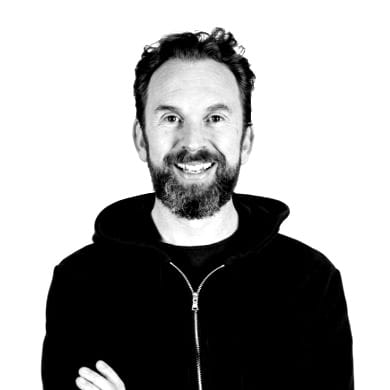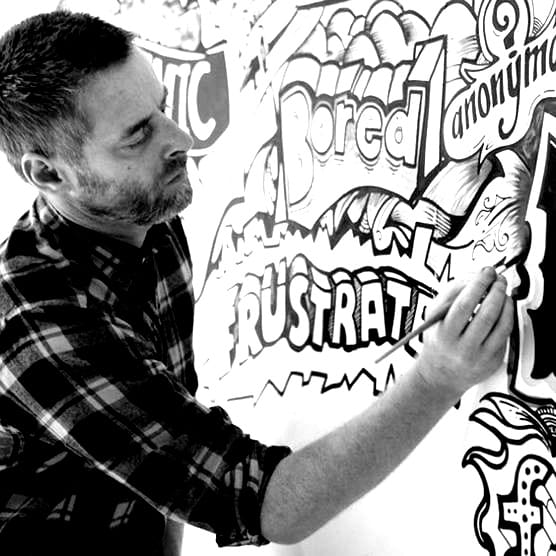Talks
You will be going home not just filled with new energy and inspiration, but also with a lot of practical ideas and tips which you can use to make a difference.
You will be going home not just filled with new energy and inspiration, but also with a lot of practical ideas and tips which you can use to make a difference.
All 12 talks will be 45 minutes long and will go into depth about various web related topics such as performance, accessibility, animation and its implications for web design and development. Below you can find the first talks, keep posted for updates!
A Look at the Numbers Driving Web Performance We all know performance is big business, but how big? Let’s take a look at some of the numbers powering the web performance industry from both sides of the table. What do performance improvements mean for my clients, and how do we translate that into a working relationship?


Andy first came to prominence in our industry as a designer and web standards enthusiast. He was driven by a desire to improve and professionalise the industry, which is how he came to start the UKs first user experience consultancy, Clearleft. He never set out to be a design leader, but now find himself leading a team of thirty people, almost by accident.
In a quest to understand what makes a great leader, and help his friends in newly minted leadership positions, Andy started the Leading Design conference and Slack community in 2016. Over the past couple of years, Andy has interviewed dozens of prominent leaders and listened in on hundreds of Slack conversations about the art and craft of leadership.
In this session, Andy recounts his journey into leadership, shares his successes and failures, and the important lessons he’s learned on the way. The result is a talk packed full of design leadership heuristics suitable for anybody who is a leader, wants to be a leader, or has a leader.
CSS Houdini is one of the most exciting and powerful advancements in web styling. It allows developers to access the CSS Object Model for the first time(!) and tell the browser how it should interpret code written in CSS.
While it may still take some time until Houdini is fully implemented and cross-browser ready, this talk examines the power of Houdini, and how we can use it today in to power-up our UI's in a progressively enhanced manner.


30 Years Ago, the web was created as an information sharing and collaboration platform, initially for the academic community. The web still has those roots and distinguishes itself as a platform with strong ethical values around internationalization, accessibility and, more recently, privacy and security.
The web and services that are built on top of it are starting to get a bad name when it comes to ethics. Technology is not neutral, and in many cases, it is up to technologists to take a stand. We need to do better! Working with the W3C TAG group, we have taken those ideas and developed a set of ethical principles that we intend to use when evaluating new web technologies. We need to start giving more respect to ethical principles when we are designing and developing both services and the underlying platform. Because we want the web to stay healthy and continue to be beneficial to society.
Graphic designers have customized layouts and title pages in magazines for decades. But, between the limited technology of the early web, and our race to systematize design once we had sufficiently capable technologies, we’ve missed out on much of what good graphic design has to offer.
Now that we’ve designed our systems, polished our patterns, and perfected our pages, it’s finally time to refocus on the specifics. With scaling typographic systems, we can leverage the power of modern CSS and variable fonts to create compelling, unique design variations tailored for the content they render. We’ll look at powerful examples of poster and publication design, and explore how many of those concepts can be incorporated in our own work in compelling and sustainable ways.


Since last year, Shopify launched in 18 new languages. In this talk, you’ll gain insight about how international is forcing us to fundamentally shift our way of thinking. In the same way mobile disrupted a once desktop-only internet, international is disrupting the way we think about commerce.
Learn about the UX principles and tooling we’re using to take on meaty challenges to drive forward a large scale product that was previously only supported in English.
CSS has come a long way since the browser wars of the late 90s. What used to be a struggle, is now often a breeze (see box-shadow or border-radius). But the last 2 years have pushed CSS into entirely new territory: with DOM-aware variables and calculations that can drive your design, without all the invasive Javascript.


When you read the words scattered over an app or website, you experience them as if spoken. This voice is every bit as real as color or motion on a digital screen — it’s an illusion, and it’s there for you to design. Words are often the most important design element in a product, but designers rarely handle them with the same care or conviction that we have for visual patterns. We can do better. I will share simple guiding principles to help you design better with words. I find lessons and inspiration in neuroscience, fairy tales, and examples from across the web.
Eight years ago I couldn’t even begin to imagine my life as it is today. Eight years ago I parked my Mac, my lifetime in graphic design and electronic tools, and picked up a pen. A long thin instrument that plays beautiful visual harmonies through inky interludes. As a child, I illustrated, painted and played. Then I grew up.
Eight years ago, I got tired of growing up. The structure and compliance of working a job. Alarms at 7am, cycle through sun, snow and sleet to sit at a desk staring at a screen for 9 hours. I took a break from life. It was the beginning of my pursuit of happiness, I just didn’t know that at the time.
Eight years later, I became that child again. I paint on walls, I play with words, I create stories, I work when I want and listen to music more than people. I travel the world painting on more walls, eat strange foods and see things with a new sense of awe. I am a different person, not what I was, or who I was. It just took me a long time to find that out.
The journey was slow, hard working and continuous, with many highs beyond imagination, and many lows, to the point of giving up. But when searching for happiness it’s a journey worth having.
This talk will be filled with stories, pointless at times, never too serious, some laughs, some sad bits, but mostly hopefully inspiring. We are not born as conformists, but free spirited children, at some point it’s good to go back there again later in life and see what happens...

